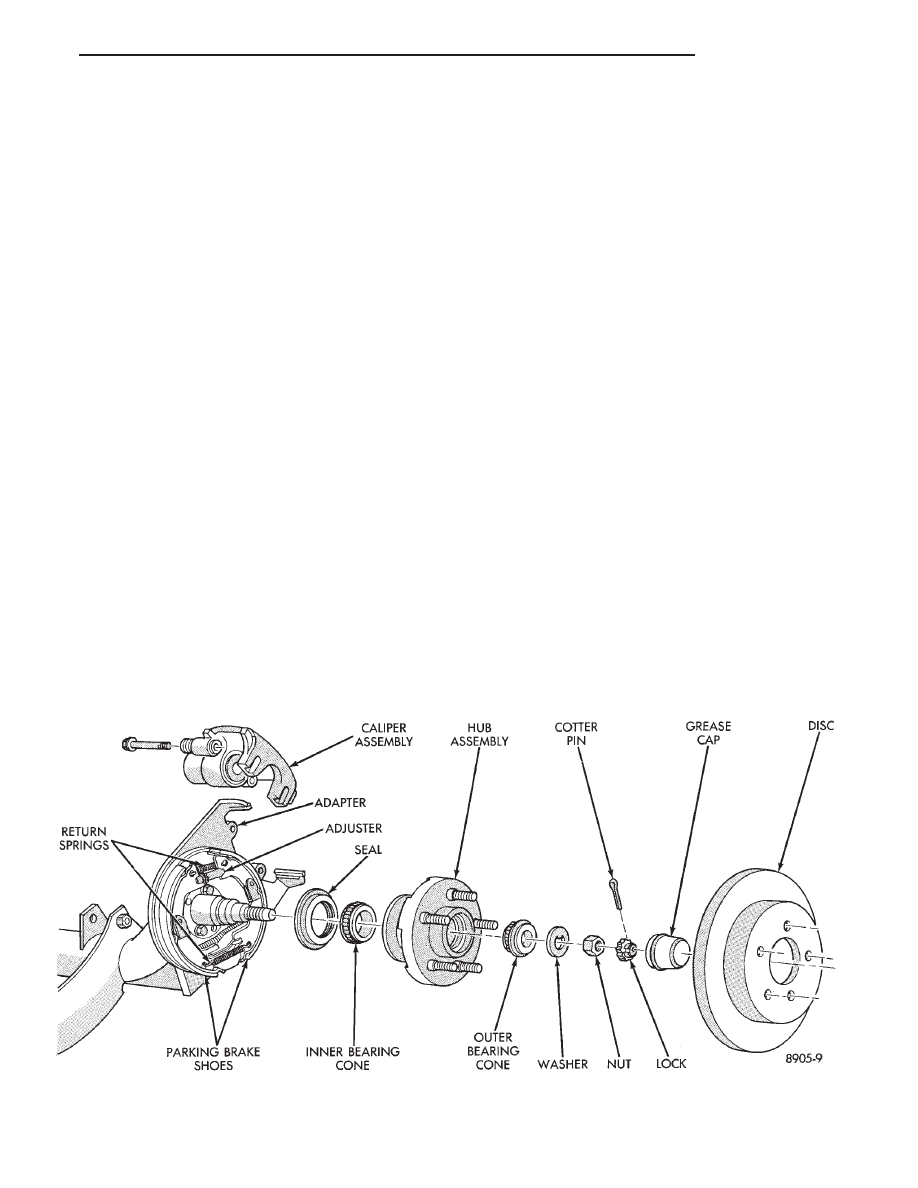Chrysler Le Baron, Dodge Dynasty, Plymouth Acclaim. Manual - part 223

REAR DISC BRAKES
INDEX
page
page
Assembling Rear Disc Brake Caliper
. . . . . . . . . . 49
Brake Shoe Removal
. . . . . . . . . . . . . . . . . . . . . 46
Cleaning and Inspection
. . . . . . . . . . . . . . . . . . . 49
Disassembling Rear Caliper Assembly
. . . . . . . . . 48
General Information
. . . . . . . . . . . . . . . . . . . . . . . 45
Lining Wear
. . . . . . . . . . . . . . . . . . . . . . . . . . . . . 45
Service Precautions
. . . . . . . . . . . . . . . . . . . . . . . 46
GENERAL INFORMATION
The rear disc brakes are similar to front disc
brakes, however, there are several distinctive fea-
tures that require different service procedures. This
single piston, floating caliper rear disc brake assem-
bly includes a hub assembly, adapter, braking disc
(rotor), caliper, shoes and linings. The parking brake
system on all vehicles equipped with rear disc
brakes. Consists of a small duo-servo drum brake
mounted to the caliper adapter. The drum brake
shoes expand out against a braking surface (hat sec-
tion) on the inside area of the braking disk (rotor).
The AC and AY body vehicles are equipped with a
caliper assembly that has a 36 mm (1.42 inch) piston,
and utilizes a 14 inch solid braking disc (rotor).
The AA body vehicle are equipped with a caliper
assembly that uses a 34 mm (1.34 inch) piston. The
AA body uses the same 14 inch solid braking disc
(rotor) as on the AC and AY applications. Also avail-
able on the AA body is a caliper assembly with a 36
mm (1.42 inch) piston, with a 15 inch vented braking
disc (rotor).
The AG AJ and AP body vehicles are also equipped
with different size caliper pistons depending on the
size and type of braking disk used on the vehicle.
The 14
9 solid braking disk (rotor) applications use a
34 mm (1.34 inch) piston, and the 15
9 vented braking
disk (rotor) applications use a 36 mm (1.42 inch) pis-
ton.
The caliper assembly on all applications float on
rubber bushings using internal metal sleeves which
are attached to the adapter using threaded guide pin
bolts.
The adapter is mounted to the rear axle of the ve-
hicle and is used to mount the brake shoes and actu-
ating cables for the parking brake system. The
adapter also mounts the rear caliper assembly to the
vehicle. The adapter has two machined abutments
which are used to position and align the caliper and
brake shoes for movement for and aft (Fig. 1)
LINING WEAR
To check the amount of lining wear, remove the
wheel and tire assemblies. If a visual inspection does
not adequately determine the condition of the lining,
Fig. 1 Rear Disc Brake Assembly
Ä
BRAKES
5 - 45